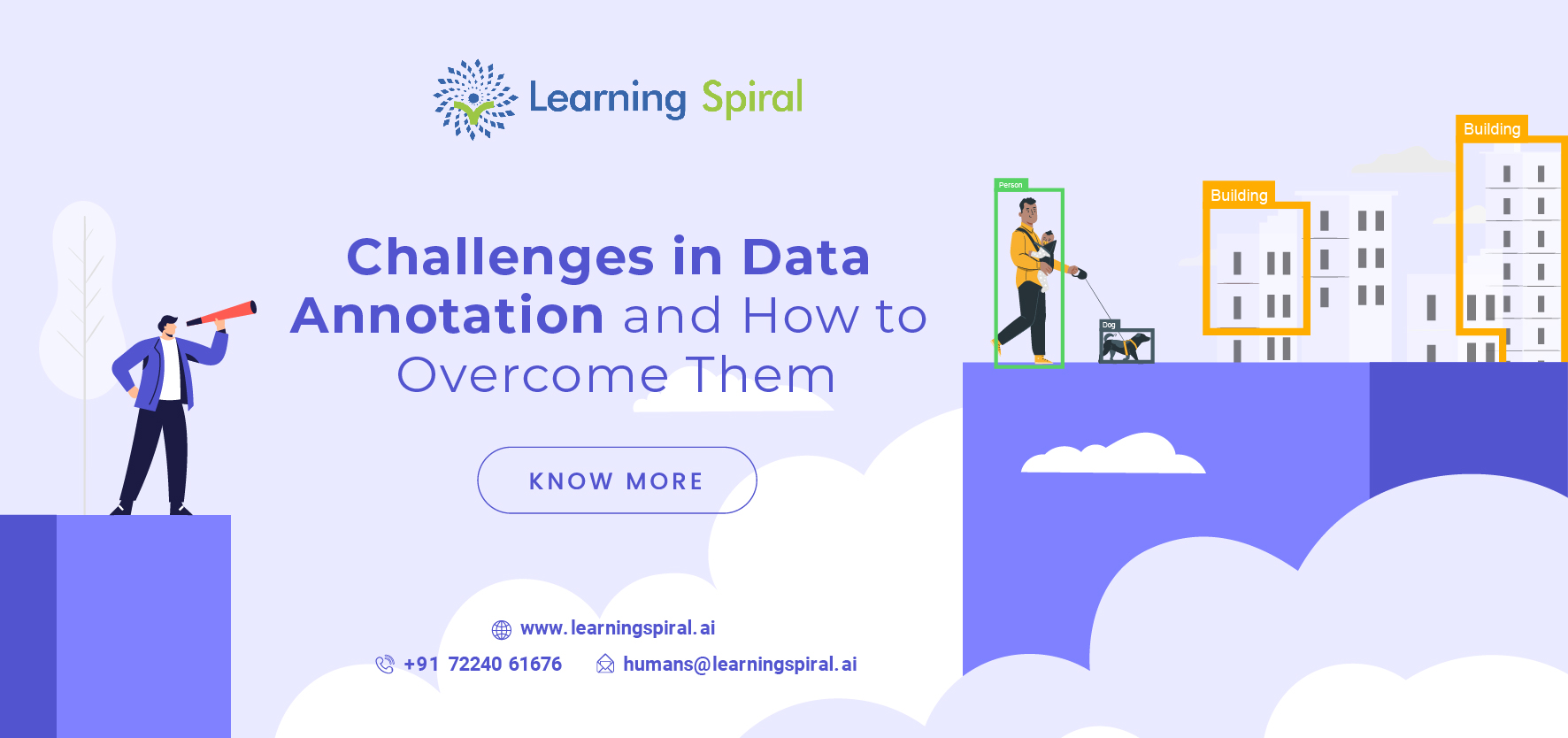
Data annotation is the process of labeling data with relevant information in all kinds of data, such as images, text, audio, and text. It is a crucial step in developing machine learning models, as the quality of the annotated data directly impacts the performance of the trained model.
Every kind of AI model or feature we see and use in the present time today is supported by the data it receives from data annotation firms.
However, data annotation comes with its own set of challenges.
Here are some of the most common ones, along with the best ways to overcome them:
1. Time-Consuming
Based on the kind of data, complex or simple, annotating datasets can be a time-consuming task. To make sure that the labelled data is accurate and up-to-date, a variety of annotators and steps are needed. It can also be considered to be an expensive task.

To overcome this challenge, you can consider using a variety of techniques to reduce the time and cost of data annotation, such as:
- Use a Reliable Data Annotation Platform: Several data annotation platforms are available that can help you automate and streamline the data annotation process. One example is Learning Spiral Pvt. Ltd. They have a collection of satisfied clients from various sectors, proving their compatibility to meet customer needs as well as their ability to provide the best service.
- Use active learning: Active learning is a machine learning technique that can help to reduce the amount of data that needs to be annotated. Active learning algorithms can select the most informative data points to annotate, which can help improve the trained model’s accuracy with less annotation effort.
2. Biases
Mostly for the manual annotators (humans), the possibility of the data being biased gets increased. People from different religions and areas have views that differ greatly. This bias is often included in the data being labeled, either consciously or unconsciously.
This can be dealt with by these ways:
- Use a diverse set of annotators to reduce the risk of bias in the annotated data. This means using annotators from different backgrounds and with different experiences.
- Provide clear and concise annotation guidelines to annotators. This will help to reduce ambiguity and ensure that the data is annotated consistently.
- Carefully review the annotated data for any signs of bias. This may involve having multiple annotators review the same data or using a machine learning model to identify bias.
3. Difficult to scale
Annotating large datasets can be difficult to scale. This is because the amount of time and effort required to annotate a dataset increases exponentially with the size of the dataset.
To overcome this challenge, you can consider the following:
- Data annotation platforms can help you to scale your data annotation process, as discussed above. These platforms offer a variety of features to help you manage and streamline the data annotation process.
- You can also use a crowd-sourced workforce to scale your data annotation process. This can be a cost-effective way to annotate large datasets, but it is crucial to ensure that the annotators are qualified and that the data is adequately reviewed for quality.
By following these tips, you can overcome the challenges of data annotation and produce high-quality annotated data that will help you train high-performing machine learning models.

